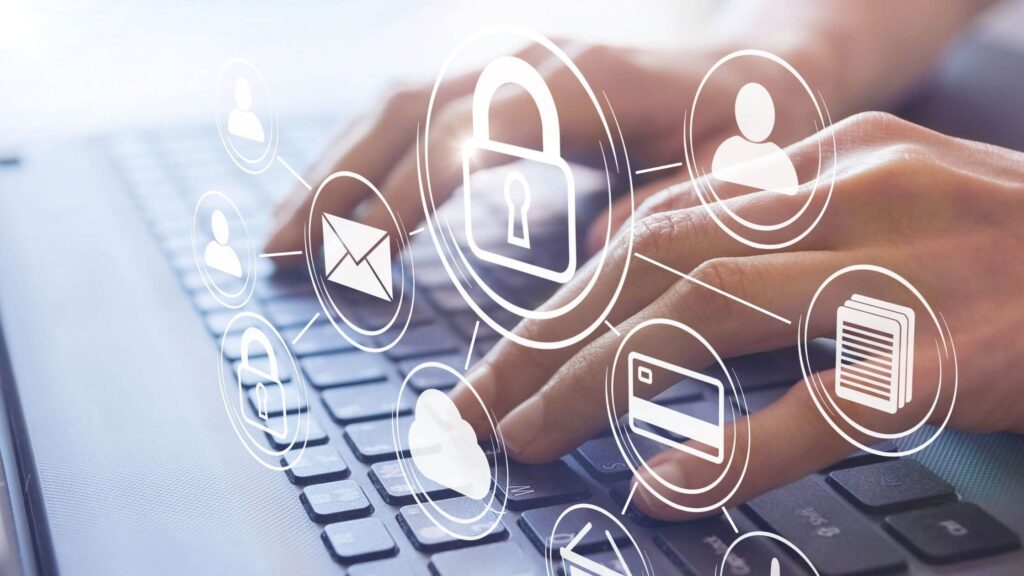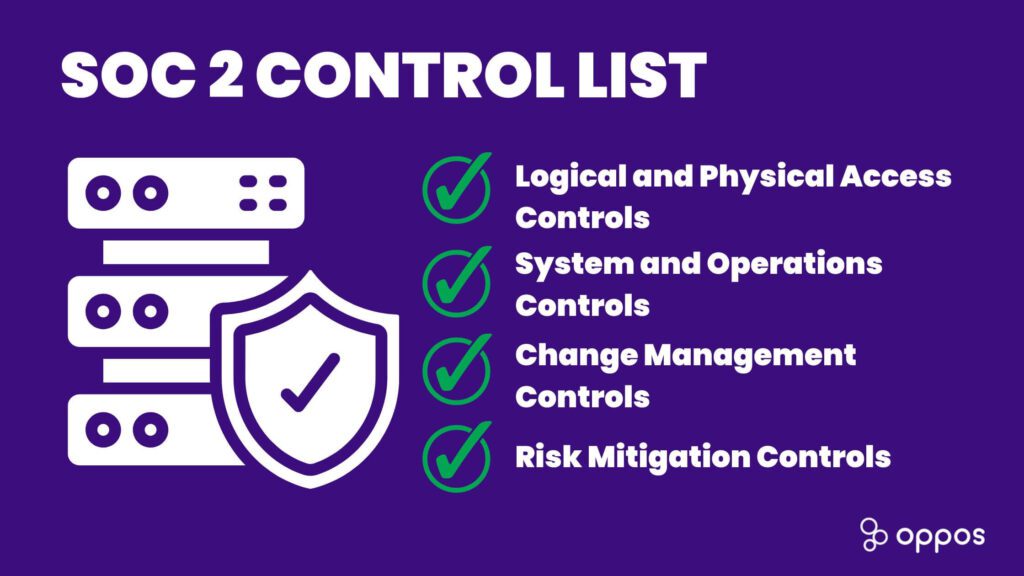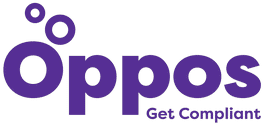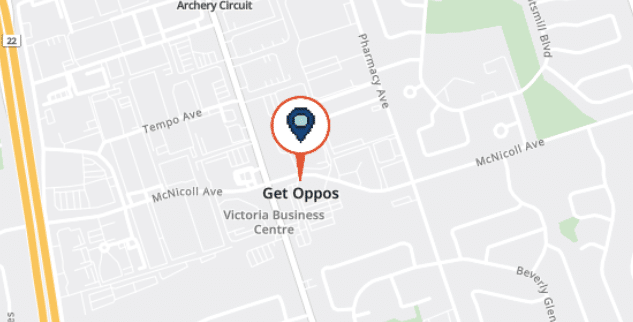If your business handles sensitive data, then you have probably heard of the SOC 2 framework. It is a set of guidelines created by the American Institute of CPAs to ensure that service providers securely manage their clients’ sensitive data. To achieve SOC 2 compliance, businesses must pass an audit that verifies their adherence to specific trust service criteria. One of the most critical components of SOC 2 compliance is the implementation of appropriate SOC 2 controls.
In this article, we will provide a comprehensive list of the necessary SOC 2 control categories that your business needs to satisfy the trust service criteria and achieve SOC 2 compliance. Whether you are new to SOC 2 or an experienced auditor, this article is an excellent resource for any business looking to secure their clients’ trust.

What Is a Security Control?
A security control refers to any measure taken to safeguard against potential security risks. In an increasingly digital age, security controls have become a crucial element of protecting sensitive information and data from unauthorized access or theft. These controls can range from software applications such as firewalls and antivirus programs to physical measures such as surveillance cameras and access control systems.
Implementing security controls is an essential part of any organization’s risk management strategy. Security controls can help prevent unauthorized access to sensitive data, detect security breaches in progress, and respond to security incidents effectively. Furthermore, security controls can help organizations comply with regulatory requirements and maintain the trust of their customers and stakeholders.
To be effective, security controls must be thoroughly designed, implemented, and monitored. Organizations must continually assess their security controls to ensure they are meeting their intended objectives and adapt them as needed to address emerging security threats. By prioritizing security controls as a key component of their overall security strategy, organizations can better protect their assets, minimize security risks, and maintain the confidentiality, integrity, and availability of their critical information.
What Is a SOC 2 Control?
SOC 2 controls are a set of requirements developed by the American Institute of Certified Public Accountants (AICPA) that define the criteria for evaluating the effectiveness of a company’s data security and privacy practices. SOC 2 controls are designed to provide assurance that a company’s systems meet the relevant security, availability, processing integrity, confidentiality, and privacy requirements.
To comply with SOC 2 controls, companies must undergo a rigorous audit process conducted by an independent auditor. The auditor evaluates the company’s security controls, as well as their adherence to those policies and procedures, to determine whether the company meets the SOC 2 control criteria.
SOC 2 controls are an essential tool for companies that handle sensitive or confidential data, including healthcare, financial, and technology companies. Compliance with SOC 2 controls demonstrates a company’s commitment to protecting the privacy and security of their customers, and can be an important factor in building trust with customers and partners.
If your company is considering undergoing a SOC 2 audit, it is important to work with a qualified auditor who has experience with the SOC 2 control framework. An experienced auditor can help you prepare for the audit process, identify areas of weakness in your security and privacy practices, and develop a plan to strengthen your controls and improve your overall security posture.
SOC 2 Compliance Vs ISO 27001
Controls to Satisfy Common Criteria
Common Criteria (CC) is an international standard used for evaluating the security and assurance of IT products and systems. The CC certification process requires the product or system to satisfy a set of security requirements based on the defined security targets. To achieve CC certification, the product or system must provide strong security functions and assurance measures, and this further requires comprehensive testing and validation against strict criteria.
One of the critical aspects in achieving CC certification is implementing appropriate controls and measures to satisfy the CC standard. These controls must ensure the product or system complies with the security and functionality requirements outlined by the CC standard. Several controls can be put in place to achieve this.
Firstly, there are physical and environmental controls that protect the product or system from unauthorized access, building on the principle of least privilege. Secondly, there are technical controls that are put in place to ensure that the product or system can maintain its security posture throughout its entire lifecycle. This may include access control mechanisms, auditing and logging, and network security measures.
Finally, there are administrative or organizational controls that ensure personnel within an organization follow defined policies and procedures, including implementing adequate training and awareness programs. These controls can help to reduce the likelihood of mistakes and errors, including those due to human factors, that can compromise the product or system’s security.
In summary, implementing controls to satisfy the CC standard is essential to receive certification, which demonstrates that a product or system provides a high level of security assurance. This requires the implementation of comprehensive physical, technical, and administrative controls and measures to ensure adherence to security requirements, including the principle of least privilege, and that security remains intact throughout the system’s lifecycle.

What are SOC 2 Compliance Principles?
SOC 2 compliance is an important measure for companies that handle sensitive data. SOC 2 is a set of guidelines established by the American Institute of CPAs (AICPA) that outlines the criteria for evaluating the security, availability, processing integrity, confidentiality, and privacy of a company’s systems and data. SOC 2 compliance ensures that a company has the appropriate measures in place to protect the data it handles.
The SOC 2 compliance principles are divided into five categories:
- Security: This covers all aspects of a company’s security management, including physical access controls, firewalls, and encryption technologies.
- Availability: This category evaluates a company’s ability to ensure that its systems and data are available to authorized users when they need them. Some examples of this would be having data backups, load balancers and redundant architecture.
- Processing Integrity: This principle pertains to the accuracy, completeness, and timeliness of a company’s processing methods. This principle requires companies to have controls that will prevent data from unauthorized changes or alteration. Some examples of integrity controls including hashing algorthimns and digital signatures.
- Confidentiality: This category focuses on a company’s ability to protect confidential data from unauthorized access. Some common examples of this would include data encryption, access controls, multi-factor authentication (MFA) and firewalls.
- Privacy: This principle pertains to a company’s ability to collect, use, retain, disclose, and dispose of personal information in accordance with its privacy policy and applicable laws and regulations. Some examples of privacy controls include having processes and procedures for ensuring data is handled correctly, anonymizing personally identifiable data and having procedures in place for notifying customers during a data breach.
To achieve SOC 2 compliance, a company must demonstrate that it has met the criteria in all five categories. It’s important to note that some controls may help to meet one or multiple of these areas at the same time, it’s not a requirement to have controls dedicated to each principle individually.
Who Needs SOC 2 Compliance?
SOC 2 compliance is an important certification for companies that handle sensitive data. While SOC 2 compliance isn’t a requirement to do business, if you’re in the business of providing services to clients or storing their sensitive data, you may want to achieve SOC 2 compliance to demonstrate your commitment to protecting their data and ensuring their privacy. Out of all of the security certifications, SOC 2 is one of the most well respected by both potential business partners as well as potential customers.
Some industries that commonly benefit from SOC 2 compliance include healthcare, finance, and technology. These industries deal with large amounts of sensitive data, including personal health information, financial data, and confidential business information. Achieving SOC 2 compliance can help these companies build confidence and trust with their clients, giving them a competitive edge in the marketplace.
But SOC 2 compliance isn’t just for these industries. Any company that handles sensitive data and wants to demonstrate its commitment to security and privacy can benefit from achieving SOC 2 compliance. This includes companies in the legal and real estate fields, as well as any business that wants to protect its own confidential information from data breaches or cyberattacks. Ultimately, SOC 2 compliance is a powerful tool to help organizations build trust and credibility with their clients and stakeholders.
Conclusion
In summary, the SOC 2 controls list is an extensive and detailed guide to meeting the Trust Services Criteria. This standard is crucial for any organization that handles sensitive data or provides services to clients that demand high levels of security. However, it can be challenging to navigate without the help of experienced consultants.
Fortunately, Oppos Cybersecurity Consultants has a team with over a decade of experience helping companies of all sizes meet SOC 2 compliance requirements. Book a call with us today to see how we can help you.
Don't wait – secure your data with Oppos' SOC 2 Compliance Services
SOC 2 Compliance FAQs
SOC 2 controls are defined by the American Institute of Certified Public Accountants (AICPA). The AICPA is responsible for establishing the Trust Services Criteria (TSC) that govern the SOC 2 audit and certification process.
The audit must be performed by an independent third-party auditor who is qualified and experienced in conducting these types of assessments. The auditor must be certified by a recognized professional organization, such as the AICPA (American Institute of Certified Public Accountants).
During a SOC 2 audit, an auditor conducts a thorough review of the company’s systems and controls. This includes an assessment of the company’s policies and procedures, as well as a review of its technical controls. The auditor will evaluate the design and effectiveness of the controls in place to ensure that they are adequate to protect sensitive information from unauthorized access or use. The auditor will also conduct tests to ensure that the controls are operating effectively.
SOC 2 is a service organization control report, which evaluates the controls of a service provider related to Security, Availability, Processing Integrity, Confidentiality, and Privacy. In order to achieve compliance you need to have effective controls across all of these areas.






